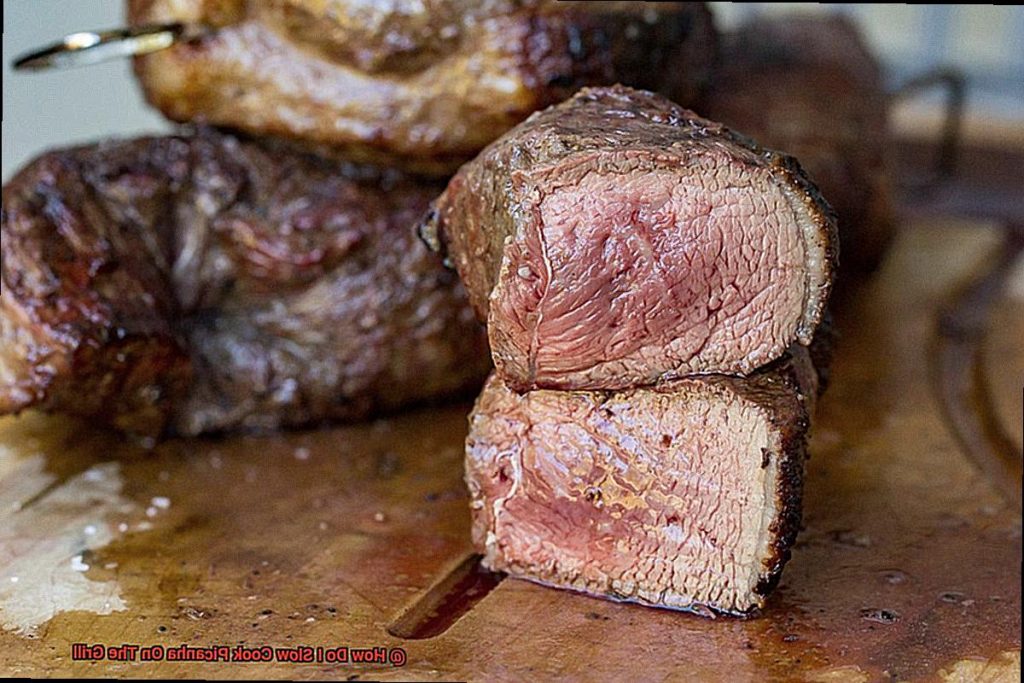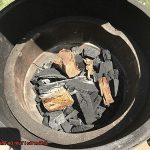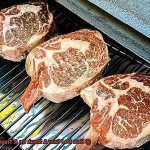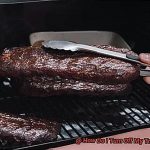Sick of the same old boring steak? Want to spice up your grilling game with a unique and mouthwatering dish? Look no further than picanha. This Brazilian beef cut, also known as top sirloin cap, is packed with flavor and perfect for slow cooking on the grill.
But how do you slow cook picanha on the grill without it turning into a dry, tough mess? Fear not, my friends – with some prep work and patience, you’ll be able to create a juicy and flavorful masterpiece that will have your taste buds doing the samba.
To start, season your picanha with a blend of salt, garlic, and any other spices that tickle your fancy. Then, sear that bad boy on high heat to get a crispy crust before moving it to an indirect heat source for slow cooking. This method ensures even cooking and maximum juiciness.
To really nail this dish, you’ll want to keep an eye on the temperature (no one likes overcooked meat) and let it rest before slicing. Trust me – these small details make all the difference in creating a perfectly succulent picanha.
So, what are you waiting for? Get that grill fired up and impress your dinner guests with this delicious Brazilian delicacy. Your taste buds will thank you.
Contents
What is Picanha?
This flavorful and versatile cut of beef is a Brazilian favorite that’s making waves across the globe. With its tender texture, rich flavor, and thin layer of fat on top, picanha promises to take your taste buds on a journey they won’t forget.
Picanha is a triangular-shaped cut located on the top of the sirloin, also known as the top sirloin cap or rump cover. Its marbling is essential to its tender texture and delicious flavor, making it a prime choice for grilling or slow-cooking.
If you’re planning to grill picanha, start by setting up a two-zone fire with one side set to high heat and the other to low heat. Generously season the meat with salt and pepper, and any additional seasonings like garlic powder or paprika.
Sear the picanha on high heat for 2-3 minutes per side to create a nice crust before moving it over to the low heat side of the grill to finish cooking. It’s important to note that picanha should be cooked to medium-rare or medium to maintain its tenderness and flavor. Use a meat thermometer to check its internal temperature periodically until it reaches 130-135°F for medium-rare or 140-145°F for medium.
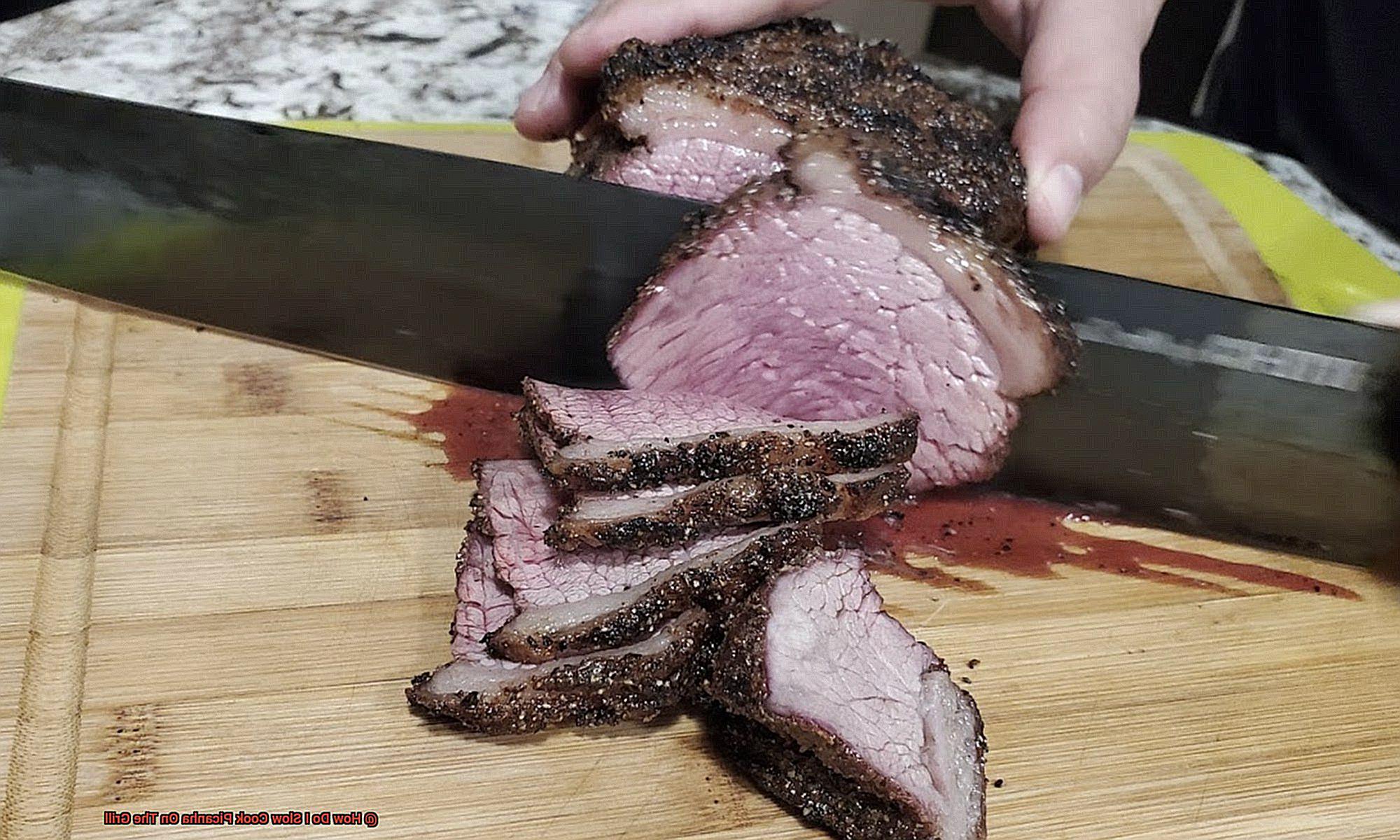
In Brazil, picanha is often seasoned with coarse salt and cooked over charcoal on skewers, known as churrasco. The meat is sliced thinly and served with sides such as rice, beans, and farofa—a toasted cassava flour mixture.
When selecting picanha for grilling or slow-cooking, choose a high-quality cut with good marbling. This will ensure that your dish is bursting with flavor and tenderness.
Preparing the Grill for Slow Cooking
Then, it’s time to learn the art of preparing your grill for this Brazilian delicacy. As an expert in this field, I’m here to guide you through the process step by step and ensure that your picanha is cooked to perfection.
Firstly, before firing up the grill, ensure that your grates are clean. Leftover residue from previous grilling sessions can ruin the taste of your picanha. Use a wire brush or scraper to clean the grates thoroughly, followed by wiping them with a damp cloth. This will ensure that your meat will be cooked on a clean surface, enhancing its flavor.
Now, it’s time to create a two-zone fire. This is a crucial step in slow cooking picanha as it allows you to sear the meat on high heat before moving it to a cooler side of the grill for slow cooking. If you’re using a gas grill, light all burners on one side and leave the other side off. For charcoal grills, arrange lit coals on one side and leave the other side empty.
Adding some extra flavor to your picanha is always an excellent idea. You can do this by using wood chips or chunks. Some popular wood choices for beef include hickory, mesquite, and oak. You can add them directly to the hot coals or use a smoker box on a gas grill. The smoke flavor will penetrate your picanha, enhancing its taste.
It’s essential to monitor the temperature of your grill throughout the cooking process. You can do this using a digital thermometer or use the hand test method. Hold your hand about five inches above the grill grate and count how long you can hold it there before it becomes too hot. Aim for a temperature of around 225-250°F for slow cooking picanha. This will ensure that your picanha is cooked to perfection with a delicious smoky flavor.
Seasoning the Picanha
Now that we’ve covered the basics of grilling picanha to perfection, it’s time to delve into the art of seasoning this Brazilian delicacy. As an expert in all things picanha, I’m here to guide you through the process of elevating its natural flavors and creating a mouth-watering experience that will have your taste buds tingling with delight.
When it comes to seasoning picanha, simplicity is key. This cut of meat is already packed with flavor, so there’s no need to overwhelm it with too many spices or seasonings. A basic combination of salt, garlic, and black pepper is enough to bring out the best in this juicy and tender beef cut. However, if you want to add some extra flair, feel free to experiment with other herbs and spices like rosemary, thyme, or paprika.
Before applying the seasoning, it’s essential to pat the meat dry with a paper towel to remove any excess moisture. This ensures that the seasoning sticks better and doesn’t slide off during cooking. Then, generously sprinkle the seasoning all over the meat, making sure to cover all sides evenly.
But here’s the secret ingredient – time. Let your seasoned picanha sit at room temperature for at least 30 minutes before cooking. This allows the seasoning to penetrate the meat and enhance its natural flavor profile. Slow-cook your picanha on the grill till it reaches its desired doneness.
Searing the Picanha on High Heat
The first step is crucial: preheat your grill to high heat. This sets the stage for achieving a beautiful crust on the outside of the meat while maintaining its juicy and tender texture.
Once the grill is hot, it’s time to sear the picanha. Place it on the grates and let it cook for about 2-3 minutes per side without moving it. Moving the meat during this process can disrupt the searing process, preventing that delicious crust from forming.
When flipping the meat, use tongs instead of a fork. Forks can puncture the meat, causing valuable juices to escape, resulting in dry and tough meat. We want to avoid that at all costs.
After both sides are perfectly seared, it’s time to move the picanha to indirect heat for slow cooking. You can achieve this by turning off one burner if using a gas grill or moving the meat to a cooler part of the grill if using charcoal.
Now, sit back and let the magic happen. Slow cooking over indirect heat allows for even cooking, ensuring that every bite of your picanha is packed with all those mouth-watering flavors.
Moving the Picanha to Low Heat
You’ve reached the crucial stage of slow-cooking your picanha to perfection. But how do you achieve this feat? The answer lies in moving your picanha to low heat.
To do this, turn off the burners on one side of your gas grill or rake the coals to one side of your charcoal grill. This is where the indirect grilling method comes into play. Indirect grilling ensures that your meat cooks slowly and evenly without burning or drying out. Aim for a temperature of around 275-300°F on the indirect side of the grill.
Place your picanha on the indirect side of the grill with the fat cap facing up. As it cooks, the juices from the fat will baste the meat, resulting in a flavor explosion. Cover the grill and let it cook for about 20-30 minutes or until it reaches an internal temperature of 125°F for medium-rare.
One important thing to keep in mind while slow-cooking your picanha is to resist the urge to flip or move it too much. Let it do its thing and only check on it occasionally. Use a meat thermometer to monitor its progress and remove it from the grill once it reaches your desired level of doneness.
Once you’ve removed your picanha from the grill, let it rest for at least 10 minutes before slicing it against the grain. This ensures that the juices redistribute throughout the meat, resulting in optimal flavor and tenderness.
Monitoring Internal Temperature with a Meat Thermometer
The key to achieving perfectly cooked meat every time is monitoring the internal temperature with a meat thermometer. But it’s not just about having any thermometer – you need a reliable one that suits your needs and budget. Choose from instant-read, digital, or analog thermometers.
Before you even start cooking, insert the thermometer into the thickest part of the picanha, ensuring it doesn’t touch any bone or fat. This will give you an accurate reading of the internal temperature throughout the cooking process. Maintaining a consistent temperature of around 225°F to 250°F on your grill is also crucial for slow cooking picanha.
As you cook your picanha, check its internal temperature every 30 minutes or so. This helps ensure that it’s cooking evenly and reaching your desired level of doneness. For medium-rare picanha, aim for an internal temperature of around 130°F to 135°F. Medium is around 140°F to 145°F, and well-done is around 155°F to 160°F.
Remember that these temperatures are just guidelines – ultimately, it comes down to your personal preference. Once your picanha reaches its desired internal temperature, take it off the grill and let it rest for at least 10 minutes. This allows the juices to redistribute throughout the meat, resulting in a more flavorful and tender dish.
In summary, here are some crucial points to remember when monitoring internal temperature with a meat thermometer:
- Choose a reliable thermometer that fits your needs and budget.
- Insert it into the thickest part of the picanha before cooking.
- Maintain a consistent temperature of around 225°F to 250°F on your grill.
- Check the internal temperature every 30 minutes or so.
- Aim for an internal temperature of around 130°F to 135°F for medium-rare picanha.
- Let the picanha rest for at least 10 minutes before serving.
Resting the Meat Before Slicing and Serving
If you want to impress your guests with a perfectly cooked picanha, there’s one crucial step you can’t skip – resting the meat before slicing and serving. In fact, this small step can make all the difference in creating a succulent and flavorful final product that will leave everyone wanting more.
Here’s why resting your picanha is so important:
- Juices need time to redistribute: When meat is cooked, its juices move towards the center of the cut. Resting allows those juices to redistribute throughout the entire piece of meat, resulting in a tender and juicy final product.
- Cutting too soon can cause dryness: Slicing into your picanha immediately after removing it from the grill means losing a lot of those flavorful juices that make the meat so delicious. Resting for at least 10 minutes allows the juices to settle back into the fibers of the meat, resulting in a much more succulent final product.
- Time for preparation: While your picanha is resting, you can use that time to prepare any sides or sauces you plan to serve with it. This way, everything will be ready to go when it’s time to serve.
Now that we know why resting is important, let’s talk about how to do it right:
- Remove your picanha from the grill and place it on a cutting board or platter.
- Cover it loosely with foil to help retain heat and moisture.
- Let it rest for at least 10 minutes before slicing.
During this time, you can also take a moment to admire your perfectly cooked meat and enjoy the aroma wafting from it. Trust us, it’s worth the wait.
Benefits of Slow Cooking Picanha on the Grill
If you’re looking for a way to elevate your picanha game, slow cooking it on the grill is the way to go. Not only does this method produce even cooking and retain natural juices and flavor, but it also offers a plethora of other benefits that will make your next barbecue gathering unforgettable.
One of the biggest benefits of slow cooking picanha on the grill is the smoky flavor it imparts on the meat. There’s something about the combination of wood chips or charcoal and slow-cooking that results in a rich, distinct flavor that is highly desirable among meat lovers. Your taste buds will be singing from the first bite.
Another advantage of slow cooking picanha on the grill is better temperature control. Unlike traditional grilling methods where high heat is used to cook the meat quickly, slow cooking requires low and consistent heat. This not only provides even cooking but also prevents the meat from burning or drying out, ensuring a juicy and tender end product.
But wait, there’s more. Slow cooking on the grill is also a healthier cooking option as it requires little to no added fat or oil. The fat from the picanha slowly melts and bastes the meat as it cooks, resulting in a more flavorful and healthier end product. Your guests will appreciate that you’re looking out for their health while still providing them with an incredibly delicious meal.
Conclusion
In conclusion, slow cooking picanha on the grill is a culinary adventure that every meat lover should embark on. This Brazilian beef cut, also known as top sirloin cap, is a flavor powerhouse that can be elevated to new heights with some patience and prep work. The end result? A juicy and flavorful masterpiece that will make your taste buds dance the samba.
To achieve this delicious dish, start by seasoning your picanha with a blend of salt, garlic, and any other spices that tickle your fancy. Then sear it on high heat to get a crispy crust before moving it to an indirect heat source for slow cooking. It’s crucial to monitor the temperature and let it rest before slicing to create a perfectly succulent picanha.
Preparing the grill for slow cooking is essential in achieving this Brazilian delicacy. Creating a two-zone fire ensures even cooking and maximum juiciness. Keep it simple when seasoning the picanha, allowing time for the flavors to penetrate the meat and enhance its natural profile.
Searing the picanha on high heat before moving it to low heat for slow cooking is crucial in achieving that smoky flavor we all love. Monitoring internal temperature with a meat thermometer ensures perfectly cooked meat every time. Resting the meat before slicing and serving allows juices to redistribute throughout the entire piece of meat resulting in a tender and juicy final product.
Slow cooking picanha on the grill offers many benefits such as smoky flavor, better temperature control, and healthier cooking options. Impress your dinner guests with this delicious Brazilian delicacy.

